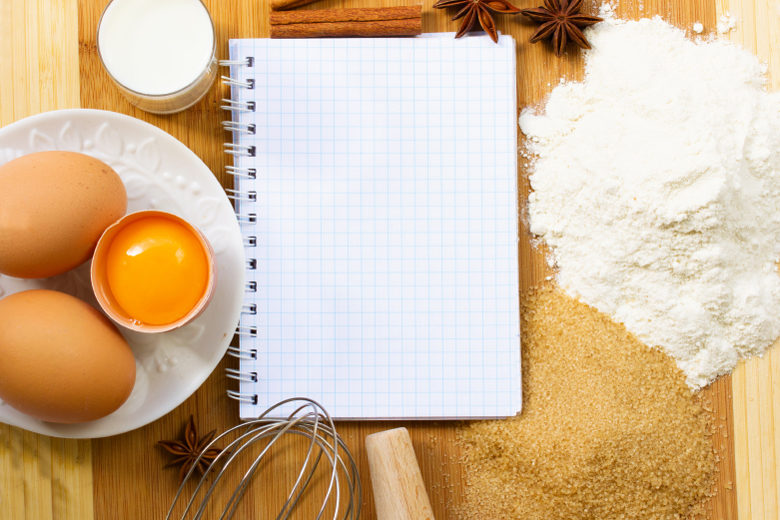
Cooking can be difficult, especially for the novice kitchen cook. One way to make the process easier is by following a well-written recipe. How do professionals take a dish and turn it into a recipe that anyone can follow? It takes practice, trial and error and some testing.
Remember Food & Nutrition Magazine‘s 19 rules of recipe writing.
The following factors go into writing a recipe — it must have:
- A title
- Number of servings and serving size
- Ingredient list
- Preparation method
Ingredient List
After you have named your recipe, move on to the ingredient list and keep these rules in mind:
- Remember to list your ingredients in the order they appear in the recipe.
- It’s important to spell out measurements.
- You also might want to break up ingredients with headings. For instance, if you’re making a pie, indicate the ingredients of the crust, and then add another section for the filling.
- Avoid using numerals together. “1 8 ounce package of cream cheese” can be interpreted as 18 ounces of cream cheese. Instead, write it as “1 (8 oz) package of cream cheese.”
- According to the blog The Kitchn, “if an ingredient is used more than once in a recipe, list the total amount at the place in the ingredient list where it is first used, then add “divided.” In the method part of the recipe, indicated the amount used at each step. For example, if “1 cup all-purpose flour, divided” is used in the ingredient list, then in the method, write: “sift 3/4 cup of the flour with the …,” and later, “sprinkle the remaining 1/4 cup of flour on top of …”
- Indicate advance preparation if something needs to be done ahead of time.
The Preparation Method
This will be the body of your recipe where you list the steps of preparation. Some tips:
- As needed, indicate the cookware, utensils or bowls that will be used.
- Keep the sentences short and use numerals or bullet points.
- When cooking over the stove, indicate the heat level needed. For example, “boil for 20 minutes,” or, “simmer over low heat until …”
- Separate methods if the ingredients indicate. Going back to the pie example, explain how to make the crust first, and then the filling.
- Try your recipe a few times to make sure the measurements are accurate; cooking can involve a lot more flexibility whereas baking does not. Using salt one day and not the next may work in your kitchen, but could be disastrous in another.
For more tips on recipe-writing, check out:


